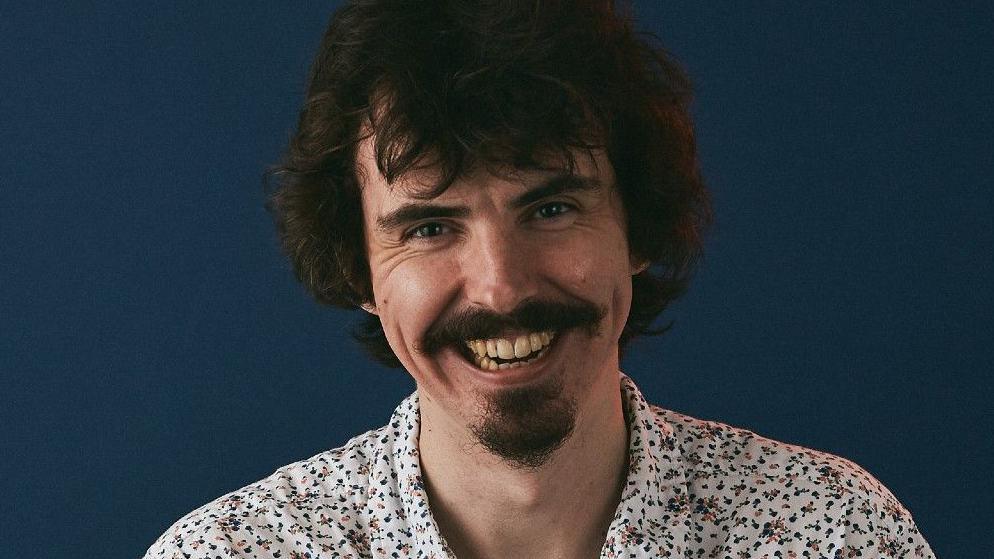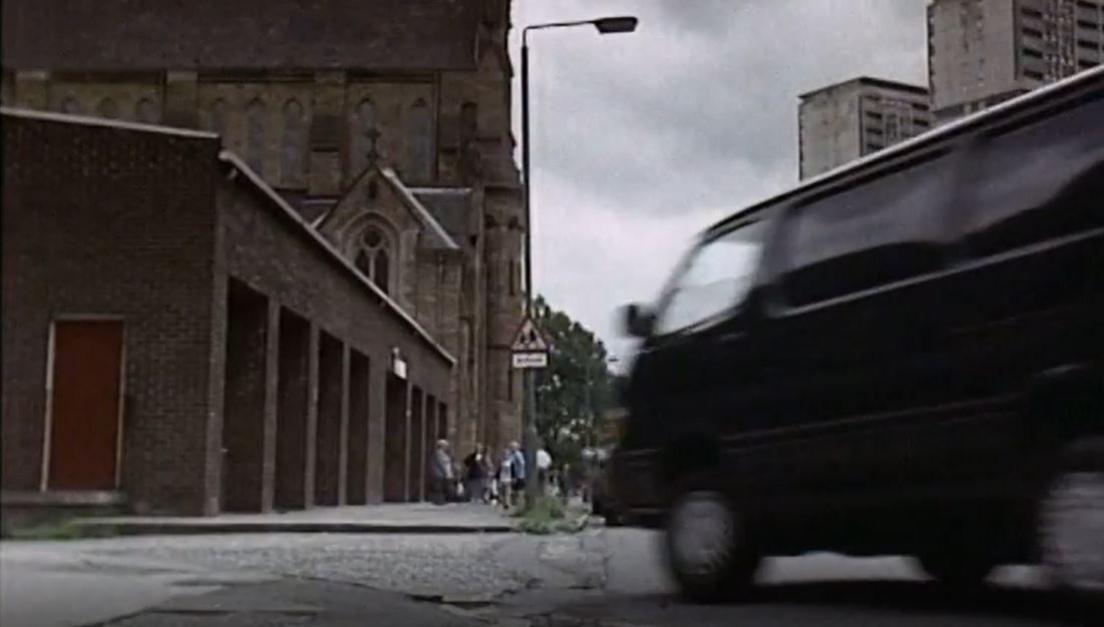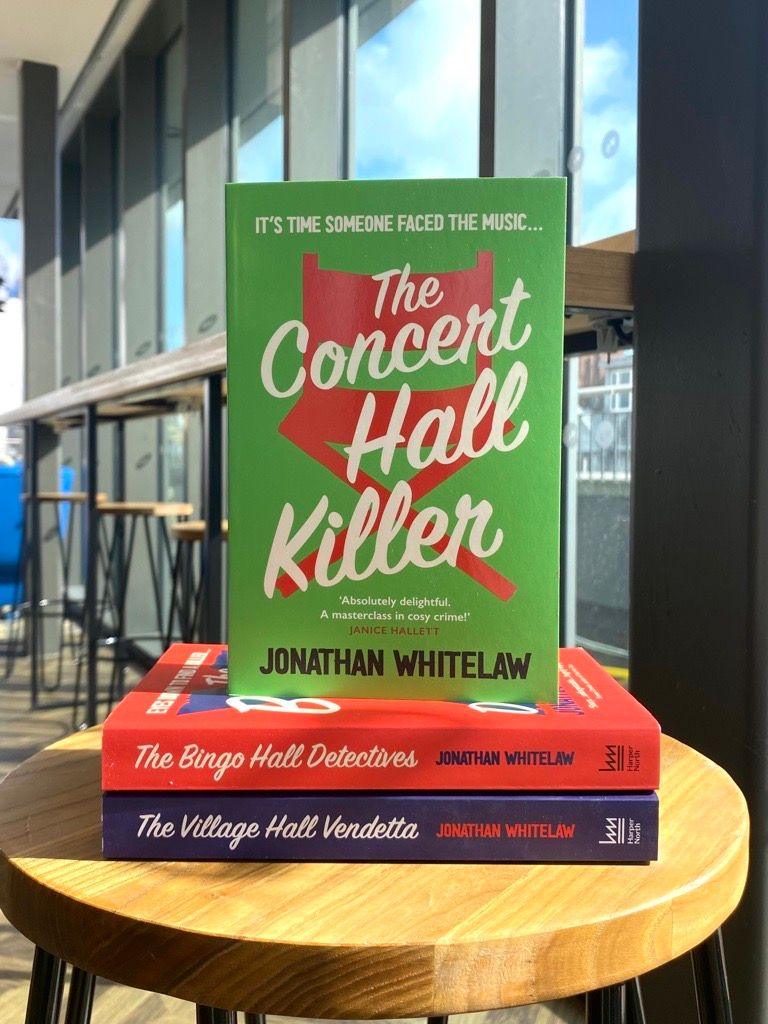I was accidentally in Taggart - it inspired a crime novel

Scottish crime writer Jonathan Whitelaw has based his latest novel on his accidental cameo in Taggart
- Published
While ambling home from primary school, dressed in shorts and knees red from the cold, Jonathan Whitelaw found himself witness to a high-speed car chase.
A black windowless van came screeching down Cumberland Street in the Gorbals pursued by an unmarked police car, piercing the quiet of the familiar daily stroll with his grandmother.
It was around 1992 and they had inadvertently stumbled onto the set of Taggart – the camera catching them just as the van flew by.
The season seven episode, entitled Double Exposure, featured early career appearances from Harry Potter actor Jason Isaacs and comedian Meera Syal – but to Jonathan’s family, he and his gran Isabel had starring roles.
“It was always part of my family legend that my gran and I had been in Taggart,” he said. “Taggart was synonymous with the city, that was the fun of it.”
“But nobody ever remembered seeing the episode. This was the 90s and we didn’t have streaming services - so if you missed it, you missed it.”
'Holy grail moment'
Decades passed and tracking down the fated episode was shelved, that was until Jonathan began writing the third novel in his own detective series.
He said the tale was inspired by his brief Taggart encounter – but he only clapped eyes on his on-screen cameo after his pitch was submitted.
“It started making me think it’s been a long time since I’d searched for this thing,” he said. “I went through every episode.
“And there we are, just this tiny little blur. I was like ‘yes, I found it!’ Nobody else was that enthusiastic but it was a holy grail moment for me.”

The 'blink-and-you'll-miss-it' moment - Jonathan and his gran Isabel in the background of a scene in Taggart
A far cry away from gritty police procedurals, Jonathan's books fall under cosy crime - a genre where violence occurs off the page and the detectives are often amateurs, much like the sleuthing pensioners in Richard Osman's Thursday Murder Club.
Jonathan's leads are an unlikely pair – jaded newspaper journalist Jason Brazel and his bingo player mother-in-law, Amita Khatri - and first came to life in his 2022 debut The Bingo Hall Detectives.
In the latest instalment, The Concert Hall Killer, a murder takes place on the set of a popular TV crime drama where behind-the-scenes tensions are running high.
For Jonathan, the humour and fondness between the lead characters are as integral to the plot as the puzzles they solve - a choice that he says was rooted in his upbringing in Glasgow.
“Glasgow is a place that takes the absurd with the banal in equal footing,” he said. “There’s nothing I can say that Billy Connolly hasn’t said a lot more eloquently and funnier.
“A city that’s been through so much and the people are the way they are - you can’t help but absorb it. And the thing about cosy crime is you're allowed to be funny.
“I’ve also always loved Terry Pratchett’s writing – he builds these wonderful characters that are pompous and poe-faced and he can cut them in half with one line of writing. I love that.”

Jonathan's third book in the series - The Concert Hall Killer - was released on 11 April
Jonathan admits he has always had a slightly macabre imagination. While working a weekend job in a kilt maker’s, he would often while away quiet moments by plotting how to get away with murder.
His writing is heavily influenced by the 10 years he spent working in journalism, but he credits the relationship between Jason and Amita, and the plot for The Bingo Hall Detectives, to his own mother-in-law.
“I was over at her house about five years ago and this old Irish popstar Philomena Begley came on TV. I turned to her and said ‘what would happen if she was murdered and you and I had to catch the killer?’
“Margaret, in her own indomitable way, said 'You and I would kill each other long before we caught them.'”
The Concert Hall Killer hit shelves last week and Jonathan says he has since been “hugely humbled” by reviews.
He has just finished the first draft of the fourth Bingo Hall book – and hopes to write another two.
Having settled in Canada, with his wife Anne Marie, toddler Henry and another baby on the way, Jonathan says it’s still very much family that keeps his creativity alive.
“The new one is dedicated to the three of them,” he said. “ But I got a message from my mother-in-law and she said ‘that’s a lovely dedication – who is it?’
“I said ‘Who do you think it is? It’s Anne Marie, Henry and the new baby.’ She thought it was dedicated to her and her two sisters. Families, right?”